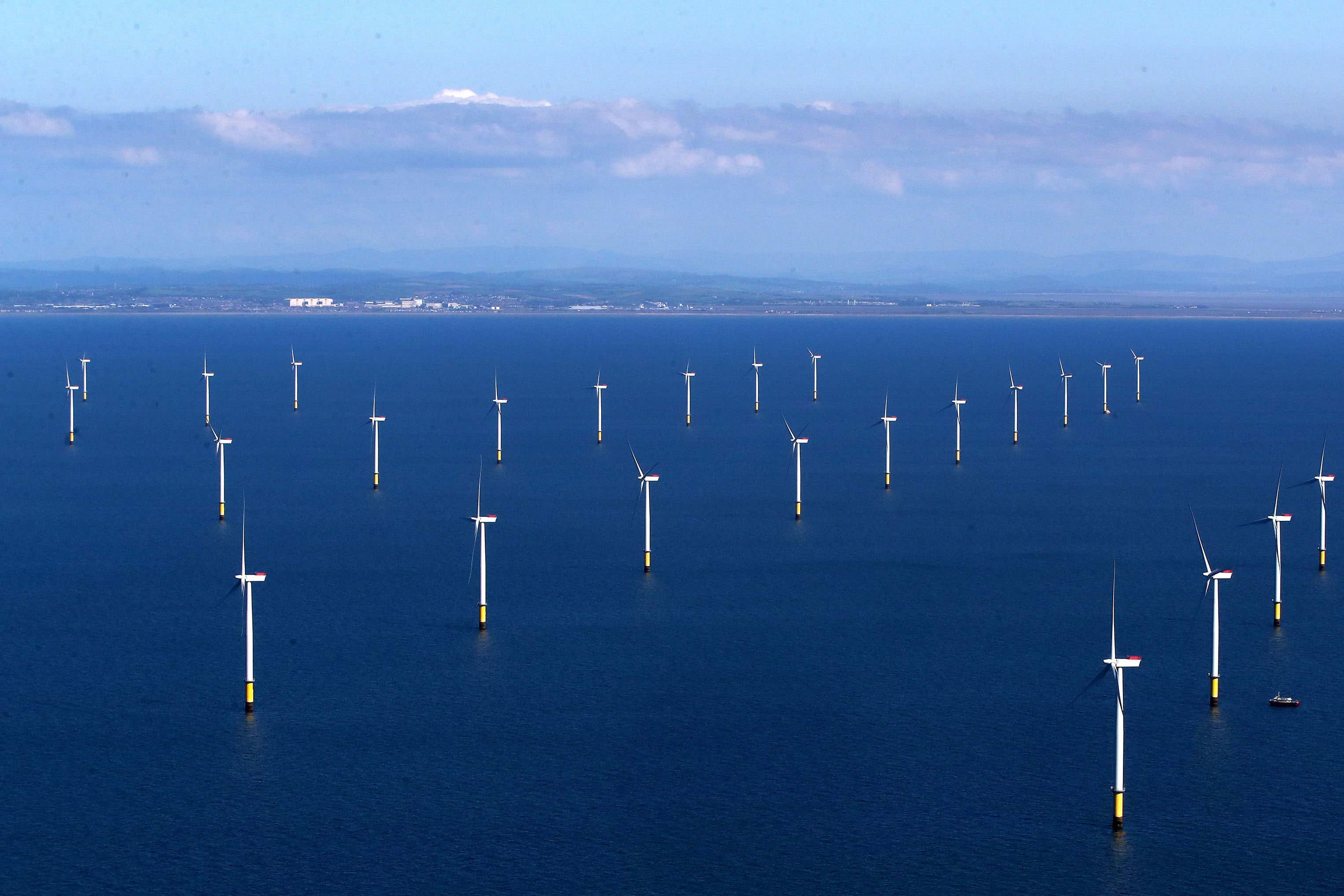World’s largest wind farm starts production off Yorkshire coast
The Dogger Bank wind farm will be bigger than any other in the world when it is fully operational, with 277 wind turbines.

The world’s largest offshore wind farm has started feeding power into the British grid for the first time as turbines started spinning at the site.
The first turbines on the Dogger Bank wind farm, which is still under construction, produced their first electricity.
Although far from complete, if Dogger Bank’s 277 wind turbines were producing at maximum capacity at midday on Tuesday, it would have been able to produce around 10% of all the electricity being used at that point.
Its 3.6 gigawatts of capacity makes it the largest offshore wind farm in the world and it also has the largest number of turbines of any offshore wind farm.
The turbines that are installed at the site — around 130 kilometres off the coast of Yorkshire — have 107-metre long blades, and one single rotation of those blades produces enough electricity to power two homes all day.
At 260 metres the turbines are nearly three times as tall as the Clock Tower in Westminster, commonly called Big Ben after one of its bells.
When operational, the full wind farm will be able to power the equivalent of six million homes per year.
It will produce this electricity at between £39.65 and £41.61 per megawatt hour, in 2012 prices. At the time of writing the price of a megawatt hour of electricity in Great Britain was considerably higher, at £117 per MWh.
It is being developed and built by SSE Renewables, Norway’s Equinor and Vargronn.
“Dogger Bank will provide a significant boost to UK energy security, affordability and leadership in tackling climate change. This is exactly how we should be responding to the energy crisis,” said SSE chief executive Alistair Phillips-Davies.
“But it is also a landmark moment for the global offshore wind industry, with Dogger Bank demonstrating just what can be achieved when policymakers, investors, industry and communities work together to achieve something truly remarkable.”
John Twomey, director of customer connections for National Grid, said: “Dogger Bank’s first power is a momentous engineering achievement and marks another milestone in Britain’s clean energy transition.
“It’s a particularly proud moment for our connections and asset operations teams, whose work reinforcing our Creyke Beck substation to connect the wind farm’s green power to our network is a key part of this project’s success story.”